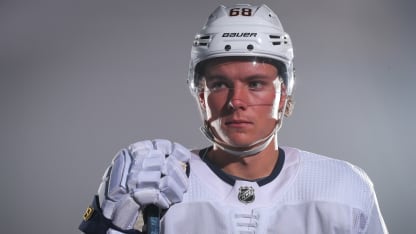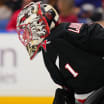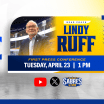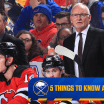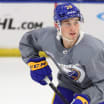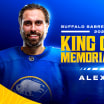Henrik Gradin began coaching Olofsson when he was 15 years old, though he estimates Olofsson was as young as 10 when he first noticed his affinity for playing with the puck.
Gradin recalls bringing his son to the rink in Ornskoldsvik, Sweden, where Olofsson would be scrimmaging with the other kids.
"You could see, he always tried to do something with the puck," Gradin said. "He always tried to work hard on the skills. He was not just there to play a scrimmage. You could see he enjoyed to do things with the puck."
That included countless hours in the backyard with a bunch of pucks, a net, and his older brother, Jesper. It was here that Victor Olofsson's shot was born.
Tony Olofsson - a professional player for more than a decade in Sweden - preached the importance of the wrist shot to both his sons. As wingers, he reasoned, they would rarely have time to get off a slap shot with accuracy. He implored them to focus on the wrist shot and try to score, every time.
So, Jesper and Victor spent their time shooting in the backyard, unaware they were refining a weapon that would one day allow Victor to lead the Swedish Hockey League in goals.
"We didn't feel like we were really working on anything," Victor recalled. "We just kind of had fun out there. I don't know, I think it's turned out pretty good."
Olofsson had already refined his shot by the time Gradin began coaching him in MODO's youth hockey program. Gradin went on to coach Olofsson with MODO's Under-20 team and was an assistant coach for the senior team when Olofsson made the jump to the SHL as a 19-year-old in 2014-15.
"He always, always scored a lot of goals, in whatever level he played," Gradin said. "If he played Under-18 or Under-20, SHL - he always produced at the level he played at."
The only thing holding him back was his size. Gradin recalls Olofsson struggling to compete physically against older men when he first made the jump to the SHL. His shot was such a weapon, they dressed him as the extra forward and played him on the top power play anyway.
Gradin, now a scout for the Colorado Avalanche, said the shot is among the best he's seen in a career that spans more than 25 years between playing, coaching, and scouting.
"Oh yeah," he said. "His wrist shot, to be that precise, to really shoot that hard and be that precise - If he wants to hit the crossbar, he hits the crossbar. And, he hides his shot so well."
